Rostam Farrokhzad
Rostam Farrokhzād (Persian: رستم فرخزاد) was an Iranian nobleman from the Ispahbudhan family, who served as the spahbed ("army chief") of Adurbadagan and Khorasan during the reign of Boran (r. 631–632) and Yazdegerd III (r. 632–651). Rostam is remembered as a historical figure, a character in the Persian epic poem Shahnameh, and as a touchstone of most Iranian nationalists.
Rostam Farrokhzad | |
|---|---|
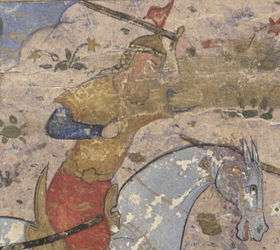 Rostam Farrokhzad in the Shahnameh | |
| Born | Adurbadagan (?) |
| Died | 19 November 636 al-Qadisiyyah |
| Allegiance | Sasanian Empire |
| Commands held | Spahbed (631-636) |
| Battles/wars | Battle of al-Qadisiyyah |
| Relations | Farrukh Hormizd (father) Farrukhzad (brother) |
Background
Rostam was a member of the House of Ispahbudhan, one of the seven Parthian clans; his father was Farrukh Hormizd, the spahbed of Adurbadagan and Khorasan, who was the son of Vinduyih, who had served as the treasurer and minister during the early reign of Khosrow II (r. 591–628), until he was killed in 591 or 594/5 by the latter, who wanted free himself of his influence. Vistahm, who was the brother of Vinduyih and the spahbed of Khorasan, was also targeted by Khosrow II, but managed to escape to the east, where he started a revolt, which encompassed most of the empire, lasting from 590/1–596 or 594/5–600. Rostam had a brother named Farrukhzad, who was active in Ctesiphon and enjoyed a great status there, reportedly being a favourite of Khosrow II.[1] Although the hereditary homeland of the Ispahbudhan seems to have been Khorasan, the family in the course of time came to rule the northern province of Adurbadagan. Rostam is hence indicated to be born in Armenia, Adurbadagan, Hamadan, or Ray.[2]
Biography
The war with the Byzantines and the overthrow of Khosrow II
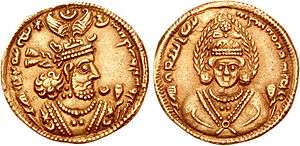
During the late phase of the Byzantine–Sasanian War of 602–628, Rostam and Farrukh Hormizd rebelled against Khosrow II in Adurbadagan, allowing the Byzantine emperor Heraclius to enter the province, where he sacked several cities, including the Adur Gushnasp temple.[3]
In 628, the feudal families of Iran secretly mutinied against Khosrow II; Khosrow's son Sheroe was shortly released by the feudal families, which included the Ispahbudhan family represented by Farrukh Hormizd; a branch of the Mihran family represented by Shahrbaraz; the Armenian faction represented by Varaztirots II Bagratuni; and the Kanarangiyan family represented by Kanadbak.[4] On February, Sheroe, together with Aspad Gushnasp, captured Ctesiphon and imprisoned Khosrow. Sheroe then proclaimed himself as king of the empire on 25 February, assuming the dynastic name of "Kavadh II". Kavadh thereafter ordered his vizier (wuzurg framadar) Piruz Khosrow to execute all his brothers and half-brothers, including Khosrow's favorite son and heir Mardanshah. Three days later, Kavadh ordered Mihr Hormozd to execute his father. With the agreement of the nobles of the Sasanian Empire, Kavadh II then made peace with Heraclius. He then took all the properties of Farrukhzad and put him under arrest in Estakhr.[5]
The Sasanian civil war of 628-632
Following the loss of territory required for the peace treaty, Farrukh Hormizd, along with Rostam and Farrukhzad, formed an independent state within the northern part of the Sasanian Empire, which became known as the Pahlav (Parthian) faction. Piruz Khosrow also formed an independent state in southern Iran, which become known as the Parsig (Persian) faction. This divided the resources of the country which resulted in a devastating plague in the western provinces of Iran, killing half of the population along with Kavadh II who was succeeded by his eight-year-old son Ardashir III.[6]
During the reign of Azarmidokht, Farrukh Hormizd, in order to strengthen his authority and create a harmonious modus vivendi between the Pahlav and Parsig families, asked Azarmidokht (who was a Parsig nominee) to marry him.[7] Not daring to refuse, she had him killed with the aid of the Mihranid aristocrat Siyavakhsh, who was the grandson of Bahram Chobin, the famous military commander (spahbed) and briefly shah of Iran.[8] Rostam, who was at that time stationed in Khorasan, succeeded him as the leader of the Pahlav. In order to avenge his father, he left for Ctesiphon, in the words of the 9th century historian Sayf ibn Umar, "defeating every army of Azarmidokht that he met".[9] He then defeated Siyavakhsh's forces at Ctesiphon and captured the city.[9] Azarmidokht was shortly afterwards blinded and killed by Rostam, who restored Boran to the throne in June 631.[10][11] Boran complained to him about the state of the empire, which was at that time in a state of frailty and decline. She reportedly invited him to administer its affairs, and so allowed him to assume overall power.[9]
A settlement was reportedly made between the family of Boran and Rostam: according to Sayf, it stated that the queen should "entrust him [i.e., Rostam] with the rule for ten years,” at which point sovereignty would return "to the family of Sasan if they found any of their male offspring, and if not, then to their women".[9] Boran deemed the agreement appropriate, and had the factions of the country summoned (including the Parsig), where she declared Rostam as both the leader of the country and its military commander.[9] The Parsig faction agreed, with Piruz Khosrow being entrusted to administer the country alongside Rostam.[12] The Parsig agreed to work with the Pahlav because of the fragility and decline of Iran, and also because their Mihranid collaborators had been temporarily defeated by Rostam.[12] However, the cooperation between the Parsig and Pahlav would prove short-lived, due to the unequal conditions between the two factions, with Rostam's faction having a much more significant portion of power under the approval of Boran.[12]
In the following year a revolt broke out in Ctesiphon. While the imperial army was occupied with other matters, the Parsig, dissatisfied with the regency of Rostam, called for the overthrow of Boran and the return of the prominent Parsig figure Bahman Jaduya, who had been dismissed by her.[13] Boran was killed shortly after; she was presumably strangled by Piruz Khosrow.[13][14] Hostilities were thus resumed between the two factions.[13] Not long afterwards, both Rostam and Piruz Khosrow were threatened by their own men, who had become alarmed by the declining state of the country.[15] Rostam and Piruz Khosrow thus agreed to work together once more, installing Boran's nephew Yazdegerd III (r. 632–651) on the throne, and so putting an end to the civil war.[15]
The Arab invasion of the Sasanian Empire
Throughout this period the great expansion of Arab-Muslim armies had slowly been penetrating the south-western frontiers under Caliph Umar ibn al-Khattāb. The Persians had repeatedly blocked this advance and in 634 the Caliph's army suffered a seemingly decisive defeat at the Battle of the Bridge. The Sasanian general Bahman Jaduya, though, was ordered back to Ctesiphon by Rostam in order to put down a revolt in his own capital city. Caliph Umar's forces retreated, only to launch a successful assault three years later.
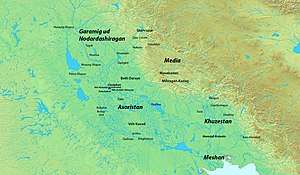
In 636, Yazdegerd III ordered Rostam Farrokhzad to subdue the Muslim Arabs invading Iran and then told him: "Today you are the [most prominent] man among the Iranians. You see that the people of Iran have not faced a situation like this since the family of Ardashir I assumed power." Yazdegerd then said: "the Arabs and their exploits since they have camped at Qadisiyyah and ... what the Iranians have suffered at their hands."
Rostam then replied by saying that the Arabs were "a pack of wolves, falling upon unsuspecting shepherds and annihilating them."
However, Yazdegerd then argued with him and said: "It is not like that. I put the question to you in the expectation that you would describe them clearly and that then I would be able to reinforce you so that you might act according to the [real situation]. But you did not say the right thing." Yazdegerd "then compared the Arabs to an eagle who looked upon a mountain where birds take shelter at night and stay in their nests at the foot of it. In the morning the birds recognized that the eagle is preying upon them. Whenever a bird became separated from the rest, the eagle snatched him. When the birds saw him [doing this], they did not take off out of fear ... If they had taken off all at once, they would have repelled him. The worst thing that could happen to them would be that all would escape save one. But if each group acted in turn and took off separately, they all perished. This was the similarity between them and the Iranians."[16]
Rostam, however, did not agree with Yazdegerd and then told him: "O king, let me [act in my own way]. The Arabs still dread the Iranians as long as you do not arouse them against me. It is to be hoped that my good fortune will last and that God will save us the trouble." Rostam then said: "We should employ the right ruse," he insisted. "In war, patience is superior to haste, and the order of the day is now patience. To fight one army after another is better than a single [and total] defeat and is also harder on our enemy." Yazdegerd, however, was too young and stubborn to listen to Rostam.[17]
Before the Muslim Arabs and the Sasanians engaged in battle, Rostam tried to negotiate with the Arabs. He therefore sent them a letter saying:
"In the presence of the pure Lord of the world we may not stand without fear and reverence, for it is through him that the revolving heavens endure and all his governance is justice and charity. May there be blessings from him on the monarch who is the adornment of his crown, throne and seal, who by his Farr holds Ahriman [the spirit of evil] enthralled, the lord of the sword and the sublime crown. This deplorable vent has occurred and to no purpose has this grievous thing, this struggle, come to pass. Tell me this, who is your king? What man are you and what is your religion and way of life? Over whom do you seek to triumph, you, naked commander of a naked army? With a loaf of bread you are satisfied yet remain hungry. You have neither elephants nor platforms nor baggage nor gear. Mere existence in Iran would be enough for you, since crown and ring belong to another, one who possesses elephants and treasures, Farr and sublime rank. His forebears from ancestor to ancestor have all been renowned kings. When he is visible, there is no moon in the sky. There is no monarch of his stature on earth. When he laughs at a feast with his lips open and teeth shining like silver, he gives away what is the ransom of an Arab chief without any loss to his treasury. His hounds, panthers and falcons number twelve thousand, all dight with golden bells and earrings. From a diet of camel's milk and lizards the Arabs have come so far as to aspire to the Kayanian throne. Is there no shame in your eyes? Do feeling and honour not lie on the path of your wisdom? With a countenance such as yours, such birth, such sentiments and spirit, do you aspire to such a crown and such a throne? If you seek to possess some portion of the world you will not make over-boastful claims. Send us some man to speak for you, someone of experience, a warrior of understanding, of the kind who may tell us what your religion is and who your guide is upon the royal throne. I shall send a cavalier to the Shah requesting him to grant you what you desire. And now do not attempt to make war on so great a monarch, for it is in his hands that the outcome of it will lie. Observe well the contents of his letter filled with good counsel; do not bind up the eyes and ears of wisdom."[18]
After having read the letter, the Arabs did as Rostam asked and sent a man named Zuhrah. However, the negotiations with him did not go well, which made Rostam ask for another messenger, and thus a man named Mughirah ibn Shubah was sent. Rostam then told Mughirah: "We are firmly established in the land, victorious over our enemies, and noble among nations. None of the kings has our power, honor, dominion." While Rostam was talking, Mughirah interrupted him and said: "If you need our protection, then be under our protection, and pay the poll tax out of hand in humility; otherwise it is the sword." Feeling greatly insulted and angered, Rostam threatened Mughirah and said: "Dawn will not break upon you tomorrow before I kill you all".[19]
Rostam, while preparing to face the Arab army, wrote a letter to his brother Farrukhzad, telling him to gather an army and then go to Azerbaijan where he should pray for him. Rostam also reminded Farrukhzad that Yazdegerd III was the only legacy left from the Sasanians.[20] Rostam then set out from Ctesiphon in command of a large Sasanian force to confront the Arab-Muslim army of Caliph Umar on the western bank of the Euphrates River at the plains of al-Qādisiyyah, a now abandoned city in southern Mesopotamia, southwest of al-Hillah and al-Kūfah in Iraq.
Death
There are multiple accounts detailing the death of Rostam, but all of them state that he perished during the battle.
One account states that Rostam was found dead in the sandstorm with over 600 wounds on his body.[21] However, the Persians were not aware of his death and continued to fight. The Sassanid right wing counter-attacked and gained its lost position, as the Muslims' left wing retreated back to their original position. The Muslims' left center, now under Qa’qa's command, when denied the support of their left wing, also retreated back to its original position.[22] A version from Ya'qubi further elaborates that Dhiraar bin Al-Azwar, Tulayha, Amru bin Ma'adi Yakrib and Kurt bin Jammah al-Abdi were the men that discovered the corpse of Rostam.[23][24]
Two additional narratives also exist, but both have been suggested to likely be the untrustworthy inventions of later story-tellers intending to mock and romanticize the incident respectively. They are as follows:
- During the final day of the battle, there was a heavy sandstorm facing the Sasanian army. Rostam used a camel loaded with weapons as shelter to avoid the sandstorm. Not knowing that Rostam was behind, Hilāl ibn `Ullafah accidentally cut the girdle of the load on the camel. The weapons fell on Rostam and broke his back leaving him half dead and paralyzed. Hilal beheaded Rostam and shouted "I swear by the God of Kaaba that I have killed Rostam." Shocked by the head of their legendary leader dangling before their eyes, the Sassanid soldiers were demoralized, and the commanders lost control of the army. Many Sassanid soldiers were slain in the chaos, with some escaping through the river, and finally the rest of the army surrendered. However, due to the presence of inconsistencies, literary devices, and comedic elements, it has been suggested that this account is unreliable and highly improbable, with even the identity the Arab soldier that delivered the death blow being disputed.[25]
- A second account, likely developed in response to the first, instead has Rostam face the Arab commander, Sa'd, in personal combat. During the fight, Rostam is temporarily blinded by the sandstorm which gives his opponent an opportunity to strike and kill him.[25]
Aftermath
The defeat of Rostam's army heavily demoralized the people of the Sasanian Empire. Soon, after Rostam's death, many more Sasanian veterans were killed, which included: Piruz Khosrow, Shahrvaraz Jadhuyih, Mardanshah in 642, and Siyavakhsh and Muta of Dailam in 643. In 651, Yazdegerd III was murdered by Mahuy Suri, and the Arabs conquered Khorasan soon after.
Personality and skills
The Shahnameh describes him as: "A sagacious, warlike and one who had been a conqueror. He was a calculator of the stars, of great perception; and he listened deeply to what his counsellors advised."[18]
Christensen describes him as: "A man endowed with extraordinary energy, a good administrator and a fine general."[26]
Family tree
| Bawi | |||||||||||||||||||||||||||||||||||||||||||||
| Shapur | |||||||||||||||||||||||||||||||||||||||||||||
| Vinduyih | Vistahm | ||||||||||||||||||||||||||||||||||||||||||||
| Farrukh Hormizd | Tiruyih | Vinduyih | |||||||||||||||||||||||||||||||||||||||||||
| Rostam Farrokhzād | Farrukhzad | ||||||||||||||||||||||||||||||||||||||||||||
| Shahram | Surkhab I | Isfandyadh | Bahram | Farrukhan | |||||||||||||||||||||||||||||||||||||||||
References
- Pourshariati 2008, p. 147.
- Lewental 2017.
- Pourshariati (2008), pp. 152-153
- Pourshariati (2008), p. 173
- Pourshariati 2008, p. 291.
- SASANIAN DYNASTY, A. Shapur Shahbazi, Encyclopædia Iranica, (20 July 2005).
- Pourshariati 2008, pp. 205-206.
- Pourshariati 2008, pp. 206, 210.
- Pourshariati 2008, p. 210.
- Pourshariati 2008, pp. 209-210.
- Gignoux 1987, p. 190.
- Pourshariati 2008, p. 211.
- Pourshariati 2008, p. 218.
- Daryaee 2018, p. 258.
- Pourshariati 2008, p. 219.
- Pourshariati (2008), pp. 225, 224
- Pourshariati (2008), p. 225
- https://books.google.dk/books?id=BlJqoAdGvEYC&printsec=frontcover&dq=Rostam+Farrokhz%C4%81d&hl=da&sa=X&ei=Cq0wUrr1F4LStQalz4CADQ&ved=0CEAQ6AEwAw#v=onepage&q&f=false
- Pourshariati (2008), p. 228, 227
- Pourshariati (2008), p. 229
- Citation error. See inline comment how to fix.
- Citation error. See inline comment how to fix.
- Citation error. See inline comment how to fix.
- Citation error. See inline comment how to fix.
- Lewental, D. (2016). "ROSTAM b. Farroḵ-Hormozd". Encyclopædia Iranica.
- Pourshariati (2008), p. 496
Sources
- Kaegi, Walter Emil (2003). Heraclius, Emperor of Byzantium. Cambridge University Press. ISBN 9780521814591.CS1 maint: ref=harv (link)
- Oman, Charles (1893). Europe, 476–918. Macmillan.CS1 maint: ref=harv (link)
- Pourshariati, Parvaneh (2008). Decline and Fall of the Sasanian Empire: The Sasanian-Parthian Confederacy and the Arab Conquest of Iran. London and New York: I. B. Tauris. ISBN 978-1-84511-645-3.CS1 maint: ref=harv (link)
- Zarrinkub, Abd al-Husain (1975). "The Arab conquest of Iran and its aftermath". The Cambridge History of Iran, Volume 4: From the Arab Invasion to the Saljuqs. Cambridge: Cambridge University Press. pp. 1–57. ISBN 978-0-521-20093-6.CS1 maint: ref=harv (link)
- Daryaee, Touraj (2012). The Oxford Handbook of Iranian History. Oxford University Press. pp. 1–432. ISBN 0199875758.CS1 maint: ref=harv (link)
- Shapur Shahbazi, A. (2005). "SASANIAN DYNASTY". Encyclopaedia Iranica, Online Edition.CS1 maint: ref=harv (link)
External links
| Preceded by Farrukh Hormizd |
Spahbed of Adurbadagan and Khorasan 631 – 636 |
Succeeded by Farrukhzad |
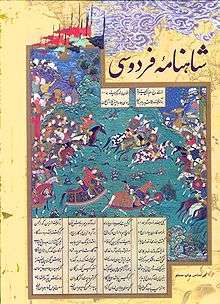
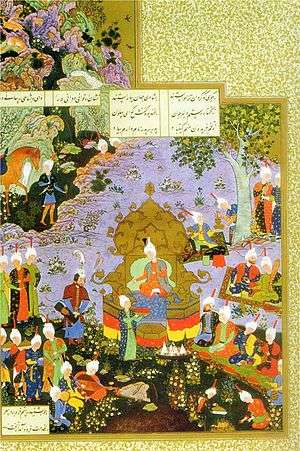
.png)